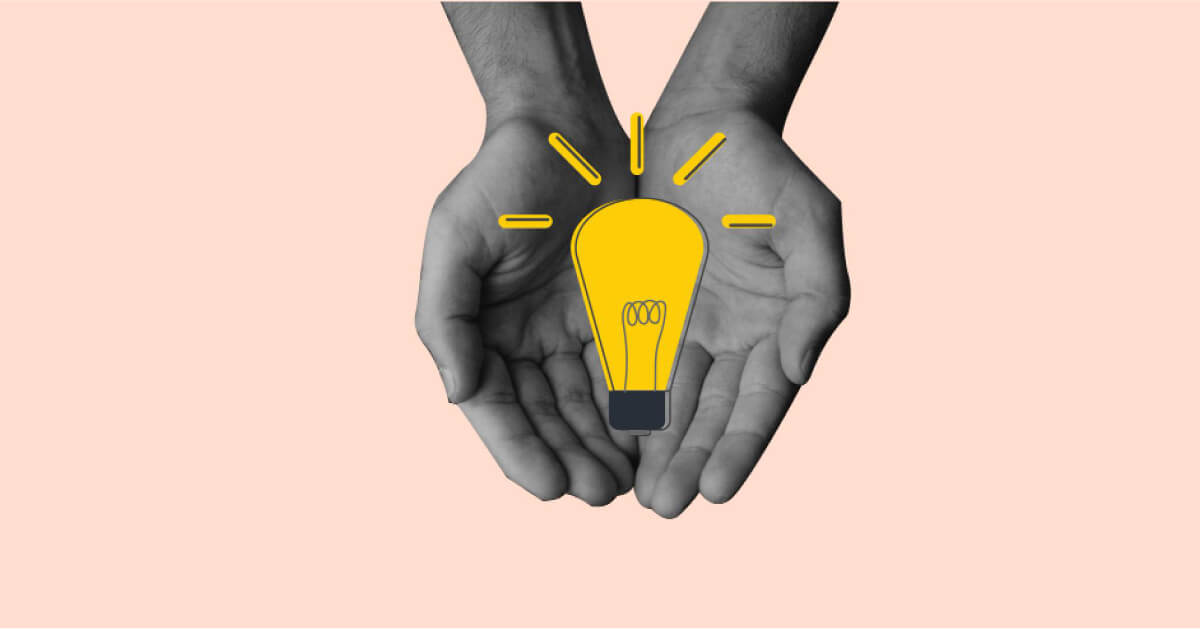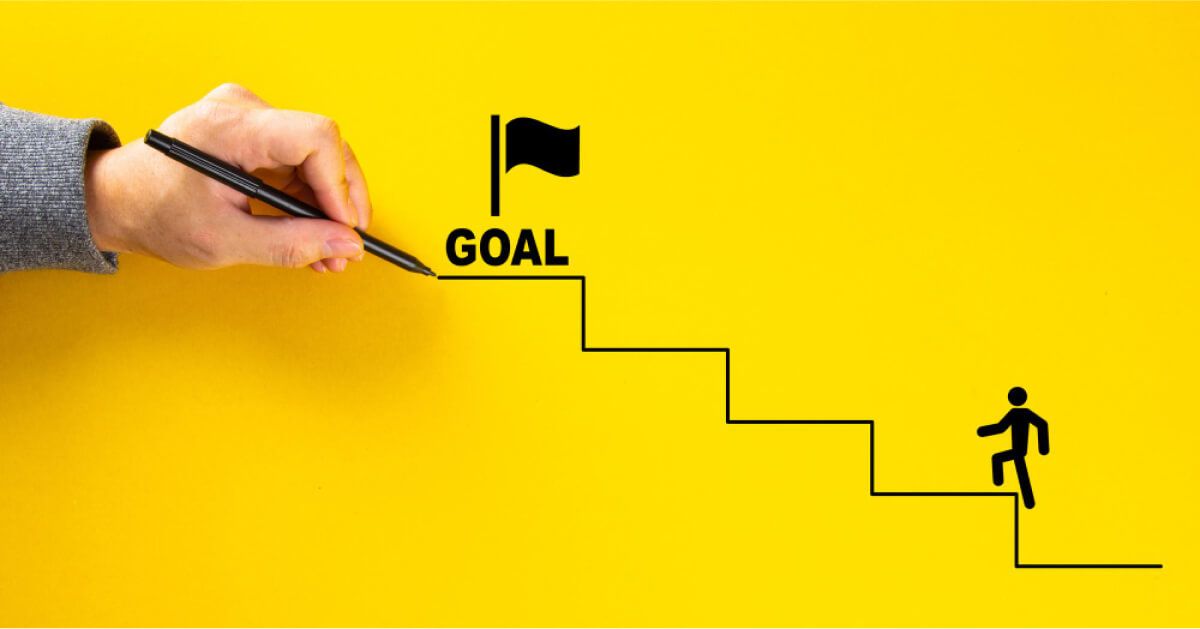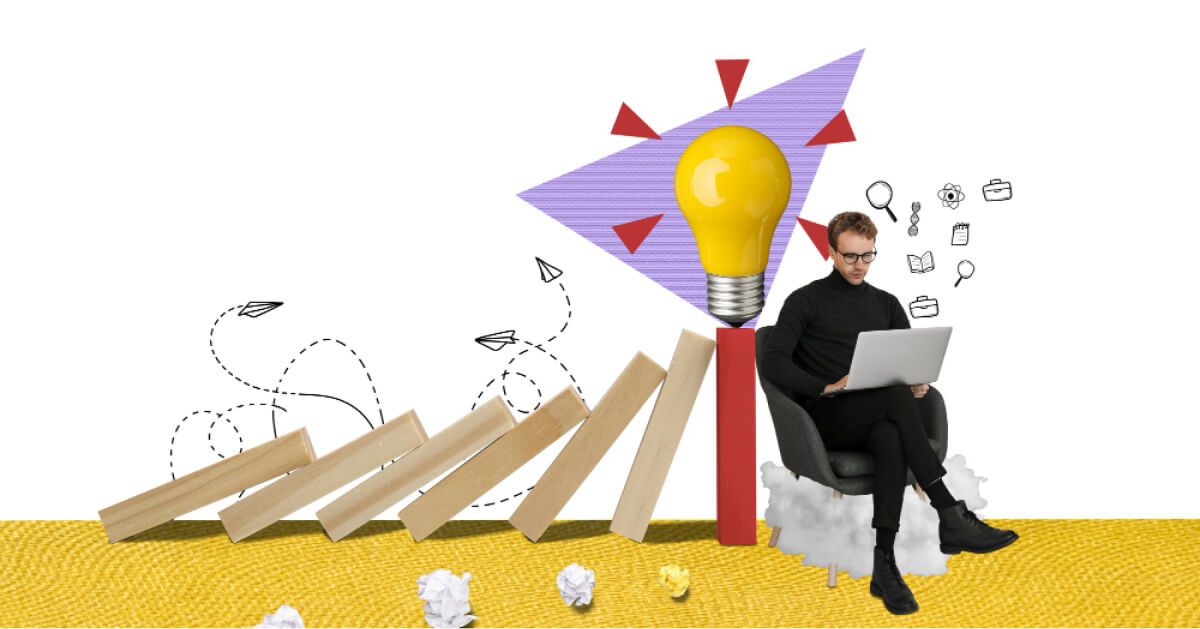What is employee innovation: Components, best practices, and examples to get inspiration from

Think back to when Netflix first shifted from DVDs to streaming—an idea born not in the boardroom, but from employee innovation. It's a prime example of how the best ideas often come from within, when employees are empowered to think creatively and challenge the status quo.
As an employer, you’re not just managing day-to-day operations; you’re nurturing a culture where innovation can thrive. But here’s the million-dollar question: how do you tap into that wellspring of creativity your employees hold? That’s exactly what we’re diving into today.
This blog will break down the components of employee innovation, offer up best practices to cultivate it, and share some standout examples from companies that are leading the charge in 2024.
Whether you're aiming to spark the next big thing or just trying to keep up with the competition, understanding and fostering workplace innovation might just be the game-changer you need. Ready to explore? Let's get started!
What is employee innovation?

Employee innovation is the process by which employees contribute new ideas, solutions, or improvements within an organization, often leading to enhanced products, services, or processes.
It involves harnessing the creativity and insights of employees at all levels, encouraging them to think beyond their daily tasks, and empowering them to take initiative in driving the company forward.
This concept is more than just encouraging employees to brainstorm; it’s about creating an environment where every team member feels their ideas are valued and has the resources to turn those ideas into reality.
Workplace innovation is vital for staying competitive in today's fast-paced market, as it leverages the unique perspectives and skills of a diverse workforce. When employees are given the tools and freedom to innovate, they not only feel more engaged but also become active contributors to the organization's success.
This type of innovation is a continuous process, rooted in a culture that champions creativity and collaboration.
What is the link between employee innovation and employee engagement?

The link between employee innovation and employee engagement is strong and multifaceted. Here’s how they connect:
- Increased ownership: When employees are encouraged to innovate, they feel a greater sense of ownership over their work. This empowerment leads to higher engagement, as they see their ideas shaping the company’s direction.
- Enhanced motivation: Employees who know their contributions can lead to real change are more motivated. This sense of purpose drives engagement, as employees are eager to bring their best ideas forward.
- Collaboration and teamwork: Innovation often requires collaboration. When employees work together to develop new ideas, they build stronger relationships and a deeper sense of camaraderie, further boosting engagement.
- Recognition and reward: A culture that values innovation typically recognizes and rewards creative contributions. This positive reinforcement not only fosters further innovation but also enhances overall engagement, as employees feel appreciated.
- Personal growth: Innovation challenges employees to think creatively and develop new skills. As they grow professionally, their engagement naturally increases, leading to a more dynamic and committed workforce.
Importance of innovation in the workplace

The importance workplace innovation cannot be overstated, as it plays a crucial role in driving business success. Here’s why:
- Competitive advantage: Innovation enables companies to stay ahead of the competition by continuously improving products, services, and processes. This adaptability is key in a rapidly changing market.
- Customer satisfaction: Innovative approaches allow businesses to meet and exceed customer expectations, leading to higher satisfaction and loyalty. Whether it’s through new product features or improved customer service, innovation keeps customers engaged.
- Efficiency and cost savings: By introducing new technologies or streamlining processes, innovation can significantly increase efficiency and reduce operational costs. This not only improves profitability but also frees up resources for further investment in growth.
- Employee satisfaction and retention: A workplace that values innovation tends to have higher levels of employee satisfaction. When employees see their ideas being implemented, they feel valued and are more likely to stay with the company.
- Sustainable growth: Workplace innovation is essential for long-term growth. By fostering a culture of continuous improvement, companies can adapt to new challenges and opportunities, ensuring sustainable success over time.
What are the benefits of employee innovation?

The benefits of workplace innovation are extensive, contributing to both individual and organizational success. Here’s how:
- Enhanced problem-solving: When employees are encouraged to innovate, they develop creative solutions to challenges, leading to more effective problem-solving across the organization.
- Increased productivity: Innovative employees often generate ideas to streamline tasks and improve processes, resulting in greater efficiency and higher productivity.
- Improved employee engagement: Innovation helps engage employees to take initiative and be proactive, which increases their engagement and commitment to the organization.
- Boosted morale: Recognizing and implementing employee ideas fosters a sense of accomplishment and pride, significantly boosting overall morale.
- Attraction and retention of talent: A culture of innovation is attractive to top talent. Employees want to work in environments where they can contribute ideas and see them come to life, improving both recruitment and retention.
- Business growth: Employee-driven innovation can lead to the development of new products, services, or markets, driving overall business growth and success.
- Adaptability to change: Innovation from within helps organizations adapt to industry changes and stay ahead of trends, ensuring long-term relevance and competitiveness.
What are the 3 pillars of innovation?

The three pillars of innovation form the foundation for fostering a culture where creativity thrives and new ideas can flourish. These pillars are:
1. Culture of creativity
A supportive environment where creativity is encouraged is essential for innovation. This includes promoting open-mindedness, tolerating failure as a learning process, and encouraging employees to think outside the box. When creativity is part of the workplace culture, innovative ideas naturally emerge.
2. Collaboration and diversity
Innovation thrives in diverse teams where different perspectives are valued. Collaboration across departments, roles, and backgrounds brings together a range of ideas and experiences, leading to more robust and innovative solutions. The synergy from collaborative efforts often sparks breakthroughs that might not happen in isolation.
3. Continuous learning and development
The commitment to ongoing learning is crucial for sustaining innovation. Organizations that invest in their employees' development—through training, workshops, and access to new tools and technologies—empower their teams to stay ahead of trends and continuously bring fresh ideas to the table.
What are the 7 major components of workplace innovation?

The seven major components of workplace innovation are essential elements that help create an environment where innovation can thrive. Here’s a breakdown:
- Leadership commitment: Innovation starts at the top. Leaders who prioritize and actively support innovation through empathic leadership set the tone for the entire organization. Their commitment fosters a culture where employees feel safe to experiment and propose new ideas.
- Employee empowerment: Empowering employees to take initiative and make decisions is crucial. When employees have the autonomy to explore new ideas and the resources to bring them to life, innovation flourishes.
- Open communication: Transparent and open communication channels encourage the free flow of ideas. When employees feel their voices are heard, they are more likely to contribute innovative solutions.
- Collaboration and teamwork: Innovation often comes from collaborative efforts. Encouraging teamwork across departments and creating opportunities for cross-functional collaboration can lead to breakthrough ideas.
- Continuous learning: Providing ongoing learning opportunities, such as training programs, workshops, and access to new technologies, keeps employees at the forefront of their fields and fosters innovation.
- Recognition and reward: Recognizing and rewarding innovative efforts motivates employees to continue thinking creatively. This can include formal recognition programs, bonuses, or even simple acknowledgments in meetings.
- Adaptability and flexibility: A willingness to adapt and embrace change is essential for innovation. Organizations that are flexible and open to new ideas can more easily implement innovative solutions and respond to evolving market demands.
What are the various types of employee innovation at work?

There are several types of workplace innovation, each contributing uniquely to the organization’s growth and success. Here’s a look at the various forms:
- Incremental innovation: This involves small, continuous improvements to existing processes, products, or services. Employees often identify inefficiencies or areas for enhancement and suggest tweaks that lead to gradual but impactful changes.
- Radical innovation: Radical innovation refers to groundbreaking ideas that significantly alter the way things are done. These innovations often lead to the development of entirely new products, services, or business models and can disrupt industries.
- Process innovation: Employees innovate by improving how work gets done. This type of innovation focuses on enhancing efficiency, reducing costs, or increasing productivity through better processes, workflows, or technologies.
- Product innovation: Employees contribute to product innovation by suggesting new features, improving existing ones, or creating entirely new products that meet emerging customer needs or market demands.
- Service innovation: This involves employees innovating in the way services are delivered, whether by enhancing customer experience, streamlining service delivery, or introducing new service offerings.
- Business model innovation: Employees may also innovate by rethinking the business model itself, identifying new ways to deliver value, reach customers, or generate revenue.
How to promote innovation in the workplace as a leader?

To promote workplace innovation as a leader, you must create an environment that encourages creativity, collaboration, and risk-taking. Here are some strategies to achieve this:
- Encourage open communication: Establish channels where employees can freely share their ideas and feedback without fear of judgment. Regular brainstorming sessions and open-door policies can help facilitate this.
- Provide resources and tools: Ensure employees have access to the tools, technology, and training they need to innovate. This includes investing in their continuous learning and development.
- Recognize and reward innovation: Publicly acknowledge and reward innovative ideas, whether through formal recognition programs or informal praise. This reinforces the value of creativity.
- Lead by example: Demonstrate your commitment to innovation by being open to new ideas yourself and showing a willingness to take calculated risks.
- Foster collaboration: Encourage cross-departmental teamwork and create opportunities for the entire workforce to collaborate, sparking diverse and innovative ideas by creating innovation labs, idea sharing sessions, focus hours etc.
What is a workplace innovation program and why do you need one?

A workplace innovation program is a structured initiative designed to encourage and facilitate employee-driven innovation within an organization. Such programs are essential for fostering a culture of continuous improvement and staying competitive in today’s fast-paced market. Here’s why you need one:
- Structured innovation process: A formal program ensures that innovative ideas are systematically collected, evaluated, and implemented, preventing great ideas from falling through the cracks.
- Employee engagement: By involving employees in the innovation process, you increase their engagement and investment in the company’s success, leading to higher job satisfaction and retention.
- Competitive edge: Innovation programs help companies stay ahead of the curve by continuously improving and adapting to market changes, giving them a significant competitive advantage.
- Risk management: A well-structured program allows for controlled experimentation, helping to manage risks associated with new initiatives by providing a clear process for testing and validating ideas before full-scale implementation.
- Culture of innovation: Establishing a workplace innovation program signals to employees that creativity and new ideas are valued, fostering a culture where innovation becomes a natural part of daily operations.
9 Best practices to kickstart employee innovation in your organization

Kickstarting employee innovation in your organization is essential for fostering creativity and staying ahead in a competitive market. Here are nine best practices to get started:
- Set clear goals: Clearly define the objectives of your innovation efforts so employees know what they’re working towards and how their ideas can make an impact.
- Create a supportive environment: Foster a culture where innovation is valued, and employees feel safe to take risks and propose new ideas without fear of failure.
- Encourage cross-department collaboration: Facilitate teamwork across different departments to bring together diverse perspectives and ideas that can lead to innovative solutions.
- Provide resources and tools: Ensure that employees have access to the necessary tools, technology, and training to support their innovative efforts.
- Implement an idea management system: Use a system to capture, evaluate, and implement employee ideas, ensuring that good ideas are not lost.
- Reward and recognize innovation: Establish a recognition program that rewards employees for their innovative contributions, motivating others to follow suit.
- Dedicate time for innovation: Allow employees dedicated time to brainstorm and work on innovative projects, separate from their usual responsibilities.
- Lead by example: Show your commitment to innovation by being open to new ideas and encouraging experimentation.
- Continuously evaluate and improve: Regularly assess your innovation practices and make adjustments to ensure they remain effective and aligned with your goals.
15+ Inspiring examples of employee innovation at work

Employee innovation can lead to groundbreaking advancements and improvements across industries. Here are 15+ inspiring examples of how employees have driven innovation at work from the most innovative companies:
- 3M’s Post-it notes: Born from a failed adhesive experiment, an employee’s creative use of the product led to the creation of one of 3M’s most iconic products.
- Google’s Gmail: Developed during Google’s “20% time” initiative, where employees could spend 20% of their time on side projects, Gmail became one of the most popular email services globally.
- Starbucks’ pumpkin spice latte: This seasonal favorite was the result of employees experimenting with new flavors, leading to a product that has become a cultural phenomenon.
- Sony’s PlayStation: Originally a rejected project within Sony, a determined employee pushed forward, eventually creating one of the most successful gaming consoles in history.
- Amazon’s Prime: An employee's idea to offer faster shipping led to the creation of Amazon Prime, a service that revolutionized e-commerce.
- Facebook’s ‘like’ button: Introduced by an engineer during a hackathon, the 'Like' button became a fundamental feature, changing how users interact on social media.
- Intel’s USB: An Intel engineer conceptualized the Universal Serial Bus (USB), simplifying how devices connect to computers and becoming a global standard.
- Dropbox’s file sharing feature: Employee-driven improvements led to seamless file-sharing capabilities, enhancing user experience and driving the platform's popularity.
- Microsoft’s Xbox adaptive controller: Inspired by an employee's passion for accessibility, this controller allows gamers with disabilities to play more easily.
- Airbnb’s experiences: Employees proposed offering local activities, leading to Airbnb Experiences, diversifying the company's offerings beyond accommodations.
- Linkedin’s skill endorsements: An idea from within LinkedIn’s team led to the endorsement feature, enabling users to validate each other's skills, enhancing networking.
- Adobe’s Creative Cloud subscription model: Transitioning from boxed software to a subscription-based model was driven by internal insights, revolutionizing Adobe's business.
- Tesla’s over-the-air updates: Tesla’s engineers developed the capability to update vehicle software remotely, improving performance and adding features post-purchase.
- IBM’s Watson health: Workplace innovation led to applying AI in healthcare, assisting in diagnostics and treatment planning.
- Slack’s emoji reactions: A Slack team member's suggestion to incorporate emoji reactions streamlined communication and added a fun element to workplace chats.
- Uber’s ride sharing feature: An employee's idea to allow multiple passengers to share a ride led to UberPOOL, offering cost-effective travel options.
- Spotify’s Discover weekly: Developed by employees during hack time, this personalized playlist feature has become a user favorite.
5 Employee innovation programs from companies with innovative workspaces

Innovative companies often implement employee innovation programs to harness creativity and drive growth. Here are five notable programs from companies known for their innovative workspaces:
- Google’s 20% time: Google allows employees to spend 20% of their work time on projects outside their core responsibilities. This program has led to the creation of products like Gmail and Google News, fostering a culture of continuous innovation.
- 3M’s 15% rule: Similar to Google, 3M encourages employees to dedicate 15% of their time to explore new ideas and projects. This initiative resulted in the invention of Post-it Notes and numerous other successful products.
- Adobe’s kickbox: Adobe provides employees with a “Kickbox” containing resources, a prepaid credit card, and a step-by-step innovation process. This program empowers employees to pursue new ideas independently, driving creativity and product development.
- Atlassian’s shipit days: Atlassian hosts quarterly “ShipIt” days, where employees work on any project they’re passionate about. This program has led to the development of new features and products that enhance the company’s offerings.
- Salesforce’s ignite: Salesforce’s Ignite program brings together cross-functional teams to solve complex problems creatively. By encouraging collaboration and innovation, this program has resulted in several groundbreaking solutions for clients and the company.
Tips to ensure success of employee innovation programs
To ensure the success of employee innovation programs, it's crucial to implement strategies that support and nurture creativity. Here are some effective tips:
- Set clear objectives: Define the goals of the innovation program so employees understand what is expected and how their idea aligns with the company's vision.
- Encourage open communication: Create an environment where employees feel comfortable sharing their ideas without fear of criticism. Open dialogue is essential for fostering innovation.
- Provide resources and support: Ensure that employees have access to the necessary tools, technology, and time to develop their ideas. Support from leadership is also key to driving innovation.
- Recognize and reward contributions: Acknowledge and celebrate an innovative idea, whether through formal recognition programs or simple gestures of appreciation. This motivates employees to continue contributing creatively.
- Implement a feedback loop: Establish a process for evaluating and providing feedback on employee ideas. This ensures that the idea is taken seriously and helps improve the program over time.
Significance of employee development surveys in creating an innovative workspace

Employee development surveys play a crucial role in creating an innovative workspace by providing valuable insights into the needs, aspirations, and challenges faced by employees. Here’s why they are significant:
- Identifying skill gaps: Surveys help in identifying areas where employees may need further training or development. By addressing these gaps, organizations can equip their teams with the skills necessary for innovation.
- Understanding employee motivation: Knowing what drives your employees is essential for fostering a culture of innovation. Development surveys can reveal what motivates your team, enabling you to tailor programs that inspire creativity and engagement.
- Enhancing employee engagement: Regular feedback through surveys shows employees that their opinions matter, leading to higher engagement levels. Engaged employees are more likely to contribute innovative ideas and participate actively in the company’s growth.
- Shaping development programs: Feedback from surveys can be used to design or refine employee development programs, ensuring they align with both the employees' needs and the company’s innovation goals.
- Tracking progress: Surveys conducted periodically help in monitoring the effectiveness of development initiatives. Platforms like CultureMonkey can facilitate this process, making it easier to gather and analyze data to continuously improve the innovation culture.
Conclusion
Innovation isn’t just about the next big idea; it’s about creating a work environment where the idea can thrive. From fostering an innovation culture that values creativity to implementing a structured employee innovation program, every aspect of your organization plays a role in driving innovation.
When employees feel empowered, supported, and recognized, they’re more likely to contribute an idea that can lead to a transformative change—whether it's small, incremental improvements or groundbreaking innovations that redefine your industry.
Understanding what motivates your team, amplifying employee voice, identifying skill gaps, and continuously engaging with them through development surveys are essential components in nurturing this innovative spirit.
These surveys are not just tools for collecting feedback; they’re a way to understand your workforce deeply, to know where they shine and where they need support. This understanding is the cornerstone of creating an environment where innovation is not only possible but inevitable.
At CultureMonkey, we believe in the power of listening to your employees and turning those insights into actionable strategies. By using our platform, you can seamlessly gather and analyze feedback, ensuring your innovation programs are aligned with the needs and aspirations of your team.
After all, innovation starts with your people, and with the right tools and culture in place, the possibilities are endless.
FAQs
1. How can I measure the success of an employee innovation program?
Measuring the success of an employee innovation program involves tracking both qualitative and quantitative metrics. Key performance indicators (KPIs) may include the number of ideas submitted, the implementation rate of those ideas, employee engagement levels, and the impact on business outcomes such as revenue growth or process improvements. Regular feedback surveys and innovation impact assessments can provide further insights into the program’s effectiveness.
2. What role does leadership play in fostering workplace innovation?
Leadership is very crucial in setting the tone for an innovation culture. Leaders who engage employees, encourage employee involvement, provide resources and recognize efforts inspire their teams to think outside the box. By modeling openness to new ideas and taking calculated risks, leaders can create an environment where their employees feel safe and motivated to contribute their innovative ideas.
3. How can I create a safe space for employees to innovate without fear of failure?
Creating a safe space for innovation involves the establishment of a culture where failure is seen as a learning opportunity rather than a setback. Encourage experimentation by celebrating attempts at innovation, regardless of the outcome, and provide constructive feedback to help your employees to grow. Offering support and resources to explore ideas further also reinforces this mindset.
4. What are some common obstacles to workplace innovation and how can they be overcome?
Some common obstacles to workplace innovation include fear of failure, lack of resources, rigid hierarchical structures, and insufficient time dedicated to creative thinking. These obstacles can be overcome by fostering a supportive culture, providing necessary tools, training and flattening the organizational structures to encourage open communication. You can also allow dedicated time for employees to brainstorm and experiment.
5. How can small businesses implement an employee innovation program with limited resources?
Small businesses can implement workplace innovation practices by starting small and focusing on creating a culture of innovation. Encourage open communication through informal meetings or digital suggestion platforms. Offer recognition for innovative ideas, even if they are non-monetary. Small businesses can also leverage cost-effective tools and platforms, such as CultureMonkey, to gather employee feedback and manage innovation initiatives efficiently.



